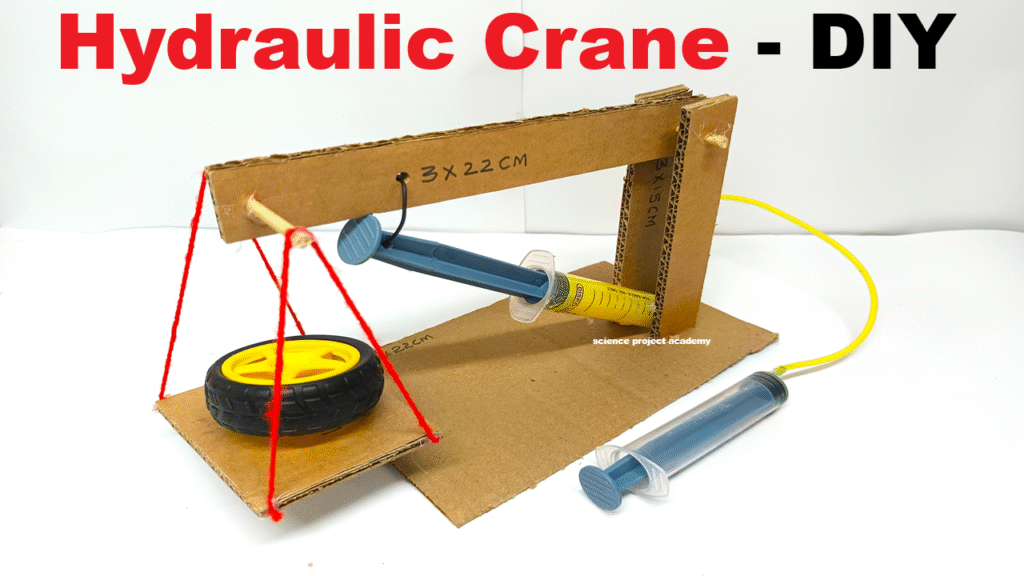This is a hydraulic crane made with syringes and cardboard. When I press this syringe, it pushes water into the second syringe, lifting the arm.

This works on Pascal’s Law, which tells us that pressure in fluids moves equally in all directions. Real cranes use the same principle to lift heavy materials at construction sites.
Video Step-by-Step Instructions
Step 1: Create Crane Base
- Cut a rectangular cardboard base (about 25cm x 15cm).
- Fix a vertical support using folded cardboard to act as the crane tower.
Step 2: Make the Crane Arm
- Cut a long strip of cardboard (20–25 cm) for the arm.
- Fix it at the top of the vertical support using a paper fastener or straw so it can pivot (like a see-saw).
Step 3: Attach the Syringe System
- Fix one syringe (A) horizontally on the crane base or side of the vertical stand.
- Connect syringe A to syringe B using plastic tubing filled with water (no air bubbles).
- Attach syringe B to the crane arm, near the pivot point.
- When you press syringe B, it will move syringe A, which raises or lowers the crane arm.
Step 4: Add the Lifting Bucket
- Attach a small paper cup, hook, or thread to the end of the crane arm.
- You can place small objects (like erasers or washers) to demonstrate the lifting mechanism.
Step 5: Decorate
- Use color paper or paint to decorate your crane.
- Add labels like “Hydraulic Cylinder”, “Crane Arm”, “Load”, and “Pascal’s Law”.
How It Works
When you press one syringe, water pushes the piston in the second syringe. This creates a movement that lifts or lowers the crane arm. This models how real hydraulic cranes use fluid pressure to lift heavy loads with minimal effort.
Scientific Concept
- Pascal’s Law: Pressure applied to a confined fluid is transmitted undiminished in all directions.
- Converts small input force into larger mechanical movement using fluid dynamics.

